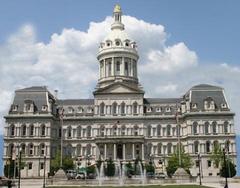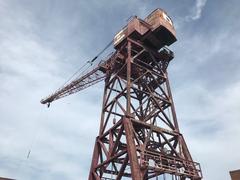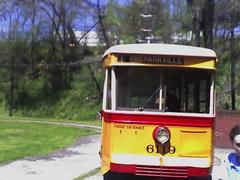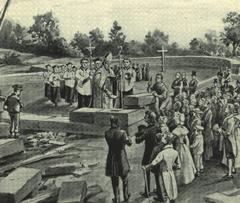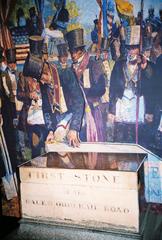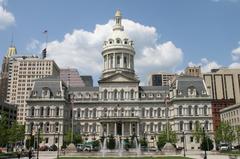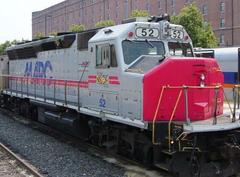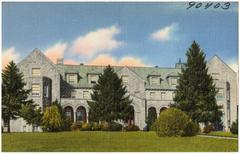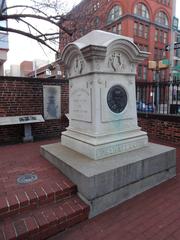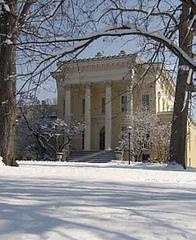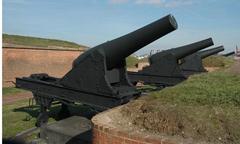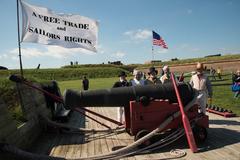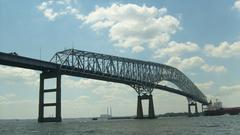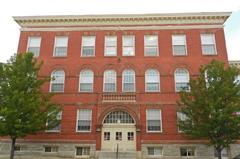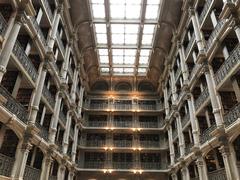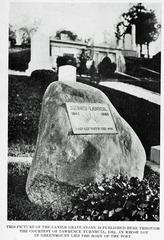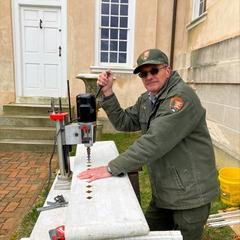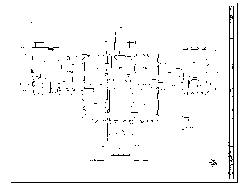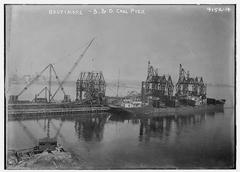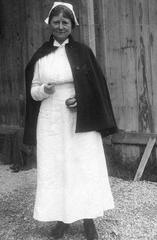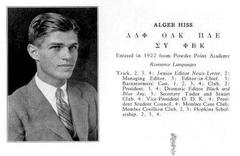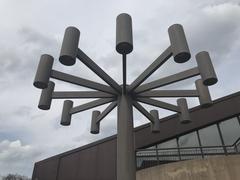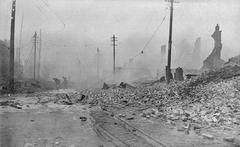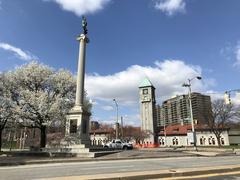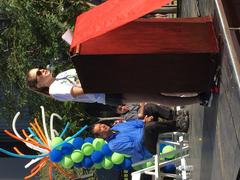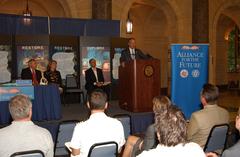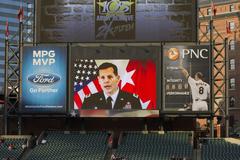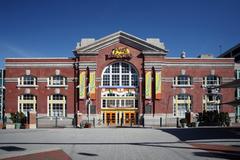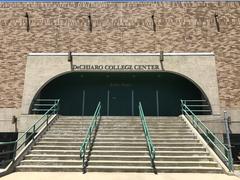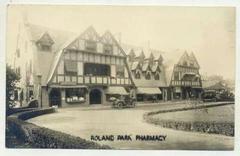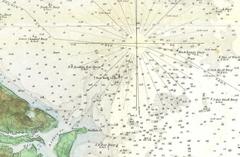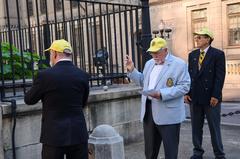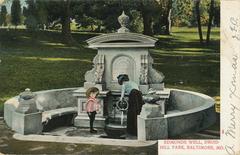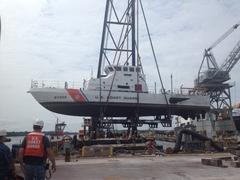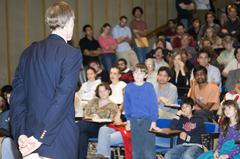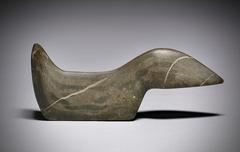
State Center Baltimore Visiting Hours, Tickets, and Historical Sites Guide
Date: 04/07/2025
Introduction
State Center Baltimore is a landmark of mid-20th-century urban planning and government infrastructure, currently at the forefront of one of Maryland’s most significant redevelopment efforts. This comprehensive guide explores State Center’s historical significance, ongoing transformation, visiting information—including hours, tickets, and accessibility—and offers practical tips for experiencing the area and its nearby cultural attractions. Whether you are a history enthusiast, curious traveler, or an urban development observer, this article will help you navigate and appreciate this evolving Baltimore hub.
Table of Contents
- Early Development and Urban Renewal Origins
- Decline and Challenges
- Redevelopment Saga and Recent Settlement
- Economic and Social Significance
- Political and Community Dynamics
- Architectural and Transit Context
- Visiting State Center Baltimore: Hours, Tickets, and Accessibility
- Nearby Attractions
- Special Events and Photographic Spots
- Travel Tips and Safety
- Frequently Asked Questions (FAQ)
- Conclusion and Call to Action
- References
Early Development and Urban Renewal Origins
State Center Baltimore originated in the 1950s and 1960s as part of a sweeping urban renewal strategy. Spanning 28 acres at the intersection of Howard Street and Martin Luther King Jr. Boulevard, the complex was designed to consolidate state agencies and leverage Baltimore’s central location and growing transit networks. Its five high-rise buildings, including the iconic 12-story Baltimore State Office Building, reflected the utilitarian “Soviet-block style” architecture that typified government projects of the era (Horizan Blog; Maryland Matters).
Decline and Challenges
Despite initial ambitions, State Center’s prominence waned in the latter half of the 20th century. The complex became outdated, costly to maintain, and failed to meet evolving needs. As downtown Baltimore and the Inner Harbor drew investment and renewal, State Center struggled with inefficiency and was often cited as an “eyesore” by the community (PlanetWare).
Redevelopment Saga and Recent Settlement
Recognizing the need for transformation, state officials in the early 2000s envisioned a mixed-use, transit-oriented redevelopment. However, legal disputes, political shifts, and community concerns stalled progress. The original $1.5 billion redevelopment plan was canceled in 2016, leading to years of litigation (The Baltimore Banner). In 2024, a $58.5 million settlement cleared major legal hurdles, restoring momentum for State Center’s revitalization (CBS News Baltimore).
Economic and Social Significance
Prime Real Estate and Transit Connectivity
State Center’s location adjacent to the Metro SubwayLink and Light RailLink positions it as Baltimore’s premier transit-oriented development opportunity (GGWash). The redevelopment is expected to generate thousands of jobs, spur investment in adjacent neighborhoods, and serve as a catalyst for regional economic growth (Maryland Matters).
Equity and Inclusion
Community advocates and officials emphasize affordable housing, public spaces, and amenities to ensure that redevelopment benefits local residents and addresses historic disparities (The Baltimore Banner).
Political and Community Dynamics
The redevelopment process underscores the importance of collaboration between state and city governments, developers, and community stakeholders. Recent workgroups and outreach initiatives highlight a commitment to transparency, inclusion, and sustainable growth (CBS News Baltimore).
Architectural and Transit Context
State Center’s architecture is emblematic of mid-century government design. The area is directly served by the State Center Metro SubwayLink station—enhanced by public art such as Paul Daniel’s “Venter” mobile sculpture—and is within walking distance of historic neighborhoods like Madison Park, Bolton Hill, and Mount Vernon (Wikipedia: State Center Station). Nearby cultural landmarks include the Maryland Center for History and Culture and the Walters Art Museum (Maryland Center for History and Culture).
Visiting State Center Baltimore: Hours, Tickets, and Accessibility
Visiting Hours
- Office Buildings: Primarily open for government business, Monday–Friday, 8 a.m.–6 p.m. Public access inside is generally restricted.
- Public Spaces: Outdoor plazas and grounds may be accessible during daylight hours.
- Nearby Museums: For example, the Maryland Center for History and Culture is open Tuesday–Saturday, 10 a.m.–5 p.m., and Sunday, 12 p.m.–5 p.m.
Tickets and Access
- State Center Grounds: Free to visit outdoor public spaces; no tickets required.
- Museums and Attractions: Admission required; tickets can be purchased online or onsite (Baltimore.org).
Accessibility
- Transit: Served by Metro SubwayLink and Light RailLink; multiple bus routes available.
- Mobility: Wheelchair-accessible stations, elevators, and ramps.
- Parking: Limited; public transit is recommended.
Nearby Attractions
- Mount Vernon Historic District: Washington Monument, Peabody Institute, gardens, and 19th-century architecture.
- Walters Art Museum: World-class art collections.
- Maryland Center for History and Culture: Exhibits on Maryland’s role in American history.
- Inner Harbor: Waterfront attractions, National Aquarium.
- Bolton Hill: Historic residential district (Tourist Secrets; Family Destinations Guide).
Special Events and Photographic Spots
- Community Events: Occasional farmers markets, art exhibits, and public forums.
- Photographic Highlights: Mid-century government buildings, “Venter” sculpture, and nearby Mount Vernon monuments.
- Events Calendar: Check Baltimore.org for current listings.
Travel Tips and Safety
- Best Time to Visit: Spring or fall for mild weather (Travellers Worldwide).
- Safety: Area is generally safe during business hours; practice standard urban precautions (Travellers Worldwide).
- Visitor Services: Baltimore Visitor Center at Inner Harbor offers maps, brochures, and personalized assistance (MapQuest Visitor Center).
Frequently Asked Questions (FAQ)
Q: What are the visiting hours for State Center Baltimore?
A: Government buildings operate Monday–Friday, 8 a.m.–6 p.m. Public access inside buildings is limited.
Q: Is there an entry fee?
A: No fee for outdoor areas; museum admissions vary.
Q: How can I get to State Center using public transit?
A: Use Metro SubwayLink (State Center station) or Light RailLink (Cultural Center stop).
Q: Are guided tours available?
A: Formal tours are not offered, but local tour companies may include State Center in broader city tours.
Q: Is State Center accessible for people with disabilities?
A: Yes, most public buildings and transit stations are ADA compliant.
Conclusion and Call to Action
State Center Baltimore stands at a unique crossroads of history and urban renewal. Its story reflects Baltimore’s resilience and vision for inclusive, transit-oriented growth. While public access to office interiors remains limited during redevelopment, the area’s proximity to major transit lines and cultural attractions makes it an essential stop for visitors interested in Baltimore’s evolving narrative.
To stay updated on visiting information, redevelopment progress, and upcoming events, download the Audiala app, consult official city resources, and follow us on social media for real-time updates and insider tips. Explore, learn, and witness the transformation of one of Baltimore’s most historic hubs!
References
- Horizan Blog – State Center Maryland Settlement
- The Baltimore Banner – State Center Settlement Redevelopment
- GGWash – Maryland’s State Center TOD Opportunity
- Maryland Matters – State Center Redevelopment Settlement
- CBS News Baltimore – State Center Settlement
- Maryland Matters – Officials Announce New Era for State Center
- Baltimore.org – Must-Do Baltimore Experiences
- Tourist Secrets – Must-Visit Historic Sites in Baltimore
- Britannica – Baltimore
- MapQuest – Baltimore Visitor Center
- Travellers Worldwide – Baltimore Travel Guide
- Wikipedia – State Center Station
- Maryland Center for History and Culture – Visit



